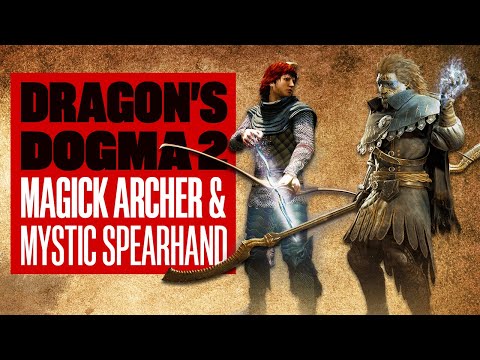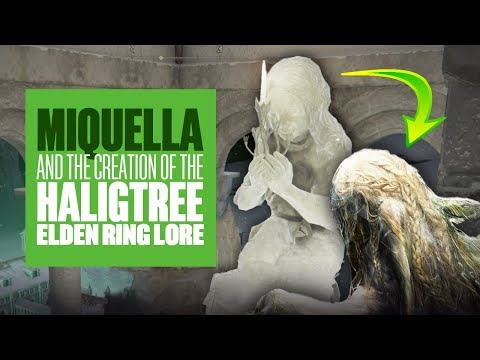[ad_1]
The other day I read an old interview with Hidetaka Miyazaki, the FromSoftware director behind Dark Souls and Elden Ring, and it seems particularly relevant here. “I’m a huge masochist, so when I make games like these… this is how I want to be treated,” he said. “‘I want to be killed this way!‘ That’s how I make it! It’s just that sometimes other people don’t understand it; it’s for my pleasure.” His interviewer interjects: “Really? You want to be killed deep in the forest, getting punched by a huge mushroom?”
“Yes, yes. And the curse area… When I get cursed–”
Interviewer: “You want to die from a barrage of arrows?!”
Miyazaki: “It’s gratifying. I like that, I just wanted to emphasise it!”
Hidetaka Miyazaki would love Pacific Drive. On my roadbound quest into the heart of this game’s cursed and recalcitrant Zone I’ve been battered, smashed and crashed. Zapped, snagged, blasted with radiation, lobbed into a ditch, fired into a tree and also, more than once, lightly bonked on the head by my own car’s boot when trying to close it.
The difference here, in the relentlessly damp Pacific Northwest, is that it’s actually quite rare any of these lead to a proper death; instead it’s the preface to a heavily bruised return to your little safehouse of a garage, where you shake out pockets full of hastily extracted shrapnel, patch yourself up, patch your car up, and go back out there for another round. Somehow, that feels even more masochistic than death by barrage of arrows: it’s an elective pulverisation you get to live out over and over again. Survival only ever a function of escape, never triumph. And unlike Miyazaki-san and his taste for mushroom-bludgeoning, I’m yet to decide for certain whether I actually enjoy it.
All of this, I have to stress, is absolutely intentional. Pacific Drive is ostensibly a loot-and-craft survival game, laced with a bit of environmental horror – but it’s also a comedy, not unlike the way FromSoftware’s games are inescapably funny, or more recently Helldivers 2. And it’s also, in some ways, a kind of Roguelike – a structure that’s essential for its best moments but also at the heart of some of its struggles.
While driving around the lovely forests, somewhat inexplicably close to the fabled Zone, a long-evacuated government experimentation ground surrounded by warning signs, an air of impending doom and a big, 300-metre wall, you suddenly find yourself zapped inside. Things start getting a little weird, as they tend to do here, and your only means of escape is via the one strangely functioning car nearby, at the direction of a few Zone-curious oddballs who pick up your signal and send one-way directions over the radio. They get you to the safehouse – a garage maintained by a wizened and excessively blunt disembodied voice called Oppy, which serves as your base. From here, you must venture out on scavenger hunts for radio antennas, reconnaissance missions and above all, raw materials, from which you craft more resilient wheels and door-panels and headlights that allow you to venture further – to gather more, to venture further, and you know the rest, the end goal being your escape, and maybe a bit of classic mystery solving along the way.
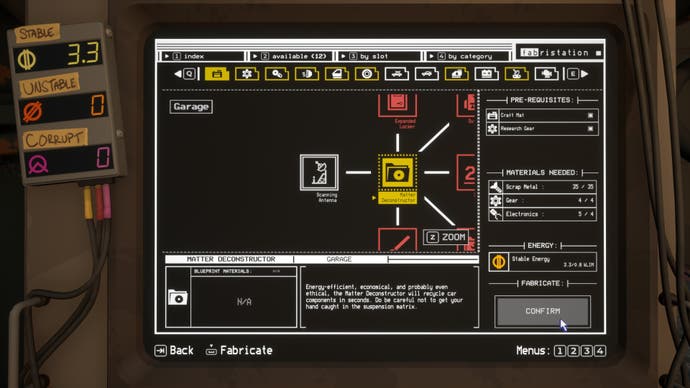
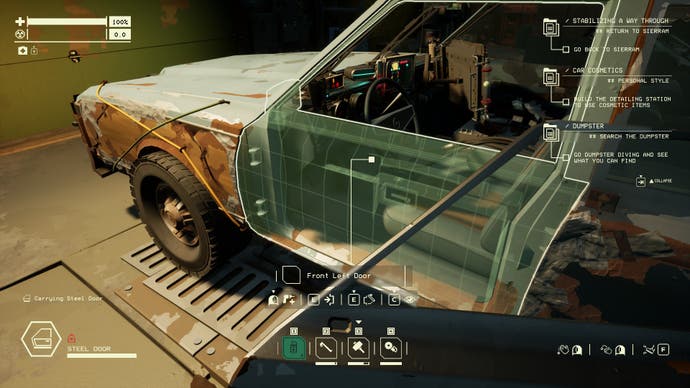
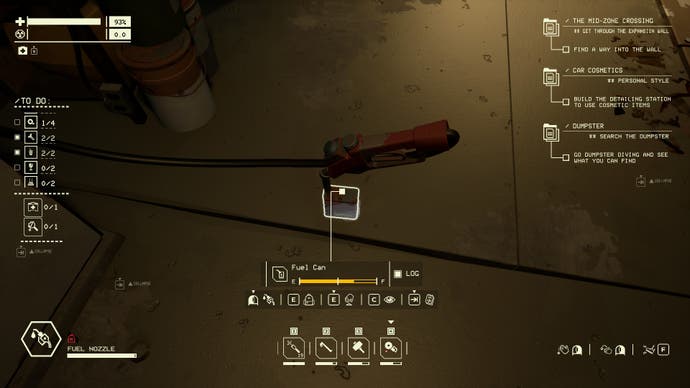
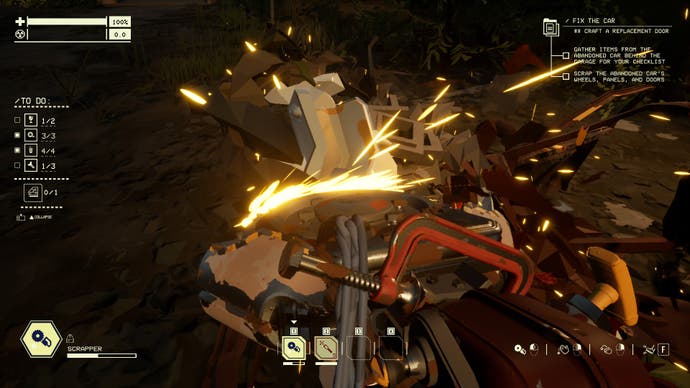
The first handful of runs – you can either follow the main story to specific areas or explore other ones for resources or nuggets of lore – will be brutal. Pacific Drive has a deluge of systems, all bolted on somewhat excessively, much the same as your side floodlights and spare fuel tank and roof rack storage compartment will be to your knackered old estate car as you get further into things. At first they’re overwhelming. The upgrade tree is vast, the range of basic and advanced resources wide, the breadth of things you can do – and things you need in order to do them – wider than the space you have in your backpack and boot storage to carry them all.
That combines with the fundamentals of gameplay itself, intentionally and, I think, brilliantly nebulous as a result of its inspirations: Roadside Picnic, Tales from the Loop, Stalker, S.T.A.L.K.E.R. – all, especially the originals, defined by their ability to portray the unportrayable. Take Anchors, for example, a doohickey required for travel back from an area in the zone but also for powering the machine that gives you those research upgrades too. Find this weird structure, by using this weird map, with this symbol, then take the orb from the structure and put it… where again? The waypoint I followed the first time, as this was all being explained, has gone. Wait, maybe I was only taking it because I needed it for that one story mission. Oppy did say something about it keeping things stable as long as it’s left in the structure. And now the world’s falling apart and a weird, spiked, hopping orb has come out of nowhere and attached itself to my car like one of those hitchhiker seeds, and the car is now honking its horn at me. Can I put it back? No?! Aaaaahhhhhh!
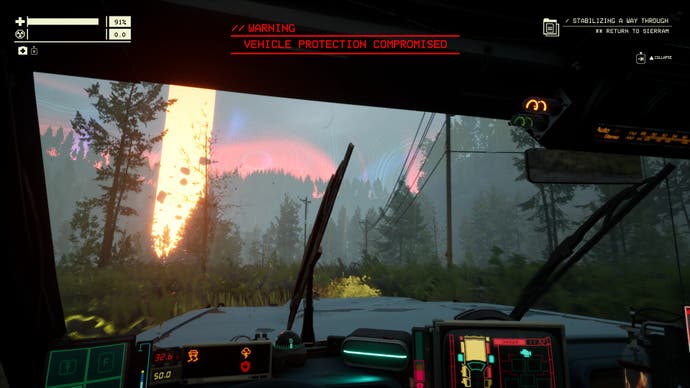
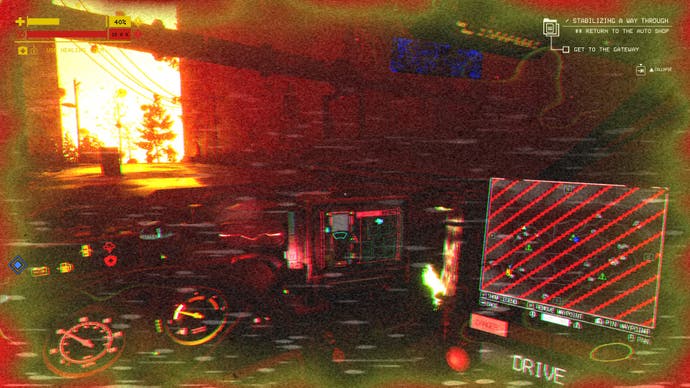
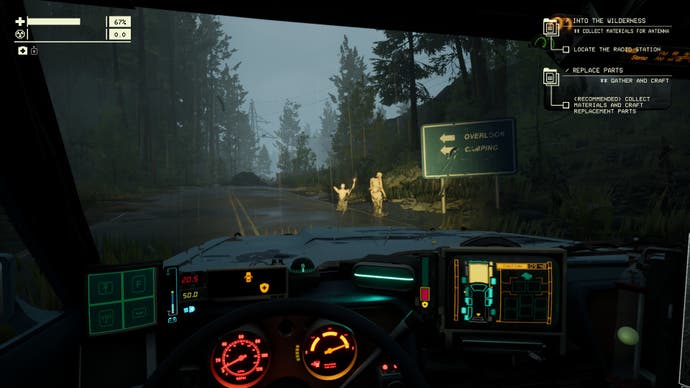
The Zone is deeply horrible. Perpetually dark, even seemingly at midday, with a comically bleak day-night cycle playing out like an in-joke on Pacific Northwest weather. There’s normal inclement weather and then the many kinds of Zone-powered inclement weather, acting as modifiers for each sector. A fun one is special clouds – I forget the name – that manifest as hysterically strong gusts of wind that send you sideways off the road, followed by sudden clusters of lightning. That one combined for me in an area filled with a few nicely interweaving “anomalies”. In this case, special glowing orbs that, on driving through, massively boost your car’s speed for a short period of time before shorting everything out, and a load of vicious obstacles called “left-rights”, which spin you out aggressively if you faintly overlap with them.
And that doesn’t even factor in the UI, a haze of tap-for-one-thing, hold-for-another obfuscation, which must have at least partially been designed to be deliberately awkward – a little prank, an opportunity for more gallows humour. I swiftly unlocked one achievement for trying to move the car 20 times without taking it out of park. All the functions of the car – windscreen wipers, headlights, doors, ignition, the map – are manual and as such also wonderfully tactile. Cue endless sequences of rushing back to the car as everything in the region inevitably crumbles again, turning on the windscreen wipers instead of the ignition – turning the ignition off when it was already on, shutting the boot on your head (again). And then the many, many status conditions your car and be lumbered with. One headlight’s smashed, the driver’s door’s gone, the rear-left tire’s on its way to flat, everything’s flickering with strange blue energy because I just rammed into a surprise-bollard charged with Zone-electricity and also, getting a bit low on fuel.


Wow, is this game exhausting. And at first it’s too much, the mix of confusion, apparent design sadism, constant risk of a fate worse than death – being teleported back to the garage without any of your resources, with them saved out there in the distant reaches of the Zone waiting for your recovery, and all that time you invested in preparation and repairs and navigation itself just gone. But then: the Roguelike.
To the rescue, the real magic of that genre appears, as the balance of power in Pacific Drive shifts, ever so subtly, with each completed or even uncompleted run. Fuelled by new resources but also new knowledge – not just the kind you log in-game from scanning anomalies and structures, but real knowledge learned from mishaps, errors and failures. Eventually you gain not mastery over the Zone, but a kind of mutual respect, a wary, reluctant coexistence. I won’t trouble you, on this run, by taking out any of your anchors beyond the one I need to get home, if you’ll let me pootle about in something close to peace between all these abandoned houses and rusted out cars.
For much of my time in Pacific Drive I tried to think about who the main character was – something that never really matters, in all honesty, but makes for a good line when summing things up. It’s not you, in-game – in first-person and restricted to receiving one-way radio chatter, you don’t even see your own hands or feet, or grunt crashing into another tree, let alone speak. The easy answers are probably the Zone, or the car, each with personalities of their own – the first capricious; the second, dare I say it, a little bit of a wise-arse? Don’t honk at me like that – but even that feels a bit simple.

In reality I’m not sure there is one at all. At best it might be the garage. Here, between the intense and at times openly unenjoyable ventures into the wilderness you do the real playing of Pacific Drive. The tinkering, refining, upgrading and mapping. But also the deduction, lesson-learning and planning. There’s a wonderful little system that sums this up, my favourite thing about Pacific Drive – the thing that, actually, makes me think I actually do enjoy this horrible torture garden of a game – in the diagnostics machine for something called “quirks”.
Quirks are strange behaviours your car seems to pick up at random. But, nefariously, these introduce themselves to you before you’re introduced to them. At one point the car’s bonnet kept opening at extremely inopportune times – during the mad dash to the extraction point, when reversing frantically away from some mannequins which are static but definitely do move into new positions when you look away, etc. Turns out this was a quirk, and they’re diagnosed and solved through some simple logic and a bit of guesswork – intentionally, ingeniously, like a real mechanic might go about fixing things themselves. Tap your theory into this little retro DOSBox computer interface and you might get your solution. Car > Moves Slowly > Bonnet > Opens – false. Stick > Shifts to Drive > Bonnet > Opens – bing! Correct. Fix it with a mechanic’s kit, which you can craft.
At one point a had a few of these running at once – resources were scarce, and they were minor annoyances rather than anything too impactful (which they certainly can be). And so in one particularly ridiculous sequence I had a quirk that popped open the passenger door every time I put it into park, headlights that flickered whenever the car moved and a horn that honks every time I shut the boot. So collecting those anchors as the world dissolves into a glowing, red-hot radioactive super-storm around you becomes: stop, clunk (that’s the passenger door), grab the orb, things kick off, load it up, remove flat tire, grab spare tire from boot, attach, shut the boot – bonk, ow – move head, shut the boot properly – meep! – back in the door, engine on, and drive off, doors a-flapping and lights a-flashing, into the sunset.
You can see why that Miyazaki line’s been stuck in my head. Pacific Drive starts as sadism, a series of cruel brutalisations at the hands of just about everything developer Ironwood Studios can manage – environments, enemies, atmospheres, systems, mechanics, menus and the actual user interface itself. Eventually, if you push on through, it becomes masochism. Lucky you! Pacific Drive amounts to horrible pain, but at least it’s pain you opted into.
A copy of Pacific Drive was provided for review by Kepler Interactive.
[ad_2]
Source link

